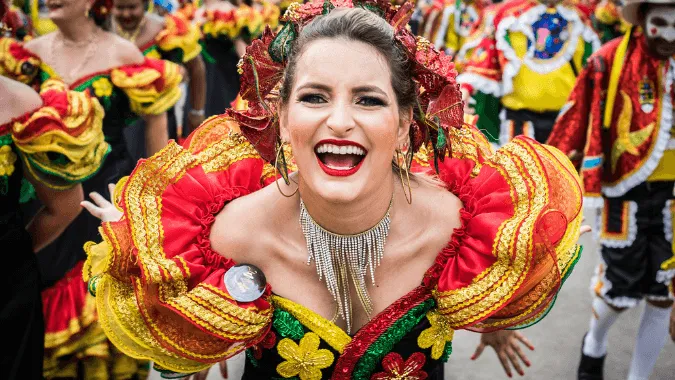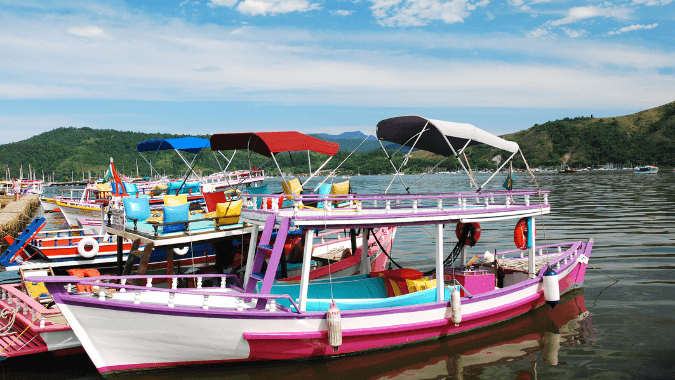Why you should visit the Zona Norte in Rio de Janeiro
Most people will come to Rio de Janeiro and just get a glimpse of the Zona Norte as they pass through the Galeao International Airport or the Rodoviaria Novo Rio interstate bus terminal. This part of the city has fewer tourist attractions than any other, and many people tend to avoid it as it’s known for being a bit rougher, but the Zona Norte has plenty to offer and is ideal for those travellers looking to get away from the more touristy areas. We have compiled reasons why you should visit the Zona Norte in Rio de Janeiro.
1. Maracanã Stadium: visit Brazil’s biggest football ground
The main attraction in the Zona Norte is the Maracanã Stadium, where some of the world’s best players have taken to the field. It was built to serve as the flagship venue for the 1950 World Cup and will host seven games in total during the 2014 World Cup, which is more than any other stadium in Brazil. Moreover, the Maracanã Stadium, which is now Brazil’s biggest football ground, will host the most important of these matches – the World Cup Final – which is due to be held on the July 13th.
[caption id="attachment_7912" align="alignnone" width="702"] The Maracana Stadium: the Zona Norte's top attraction / source[/caption]
The Maracana Stadium: the Zona Norte's top attraction / source[/caption] Feira Nordestina: sample northeastern culture
When you visit the Zona Norte in Rio de Janeiro, a trip to Feira Nordestina is a must. This enormous market demonstrates the culture from the north-east of Brazil, with food stalls selling Bahian dishes, beer and caprihnas, Brazil’s national drink. At weekends, you can catch live bands playing forró as well as samba groups and capoeira circles. As well as food and drink, you can purchase CDs, hammocks and a wide array of handicrafts.
[caption id="attachment_7913" align="alignnone" width="640"] Sample Bahian food, drink and music at the Feira Nordestina / source[/caption]
Sample Bahian food, drink and music at the Feira Nordestina / source[/caption] Samba Schools: experience a samba school rehearsal
There are several samba schools in the Zona Norte, including Bateria do Salgueiro, which was among the first to showcase the talents of Afro-Brazilians. Bateria do Salguiero now has one of the largest followings in Brazil, which includes a number of celebrities. You will also find Unidos de Vila Isabel, the city´s fastest-growing samba school, and Mangueira, which is considered to be Brazil's most popular and is the oldest among the existing samba schools in Rio de Janeiro. All three host Carnival rehearsals, whereby you learn about the dance and witness preparations for the year´s most important event, Rio de Janeiro Carnival.
[caption id="attachment_7914" align="alignnone" width="640"] Witness preparations for Rio de Janeiro Carnival at a Samba School rehearsal / source[/caption]
Witness preparations for Rio de Janeiro Carnival at a Samba School rehearsal / source[/caption] Grajaú State Park: get some peace and quiet
Grajaú is a quiet neighbourhood in the Zona Norte, which encompasses Grajaú State Park and Forest Reserve, a 136 acre space that serves as a refuge for a number of wild animals such as marmosets, bush dogs, parakeets, vultures, and hawks. The park is also a popular destination for hikers and rock climbers, who venture to these parts to take on the 1456ft Pedra do Andaraí.
[caption id="attachment_7915" align="alignnone" width="667"] Pedra do Andaraí / source[/caption]
Pedra do Andaraí / source[/caption] Museums: expand your cultural knowledge
There are a number of museums worth checking out in the Zona Norte, namely Museu Nacional, formerly the Emperor’s Palace and currently Brazil's national history museum, featuring dinosaur fossils and a variety of mounted animals. Another is Museu do Primeiro Reinado, which depicts the history of Emperor Pedro I before he was driven out of the country. Although the collection is fairly modest, it’s worth paying a visit for the building and its interior, which boasts striking murals by iconic Brazilian painter Francisco Pedro do Amaral. You will also find other cultural delights, such as the calçadas musicais in Vila Isabel, where twenty complete musical works by Brazilian composers who used to frequent the neighbourhood are written in the stones.
[caption id="attachment_7916" align="alignnone" width="640"] Entire songs written by famous Brazilian composers are written here / source[/caption]
Entire songs written by famous Brazilian composers are written here / source[/caption] As well as these reasons to visit the Zona Norte in Rio de Janeiro, there are several other factors which make it a worthy place to travel to. On the whole, you will experience a friendlier attitude towards tourists, because there simply aren’t as many so locals don’t grow weary of them, meaning the streets and beaches are also a lot less crowded. Prices tend to be lower and the overall feel is a lot more relaxed. Just be careful if you are visiting at night though, for it is also less safe, so make sure you take taxis and don’t walk alone.
For more information on what to do on your visit to the Zona Norte and the rest of Rio de Janeiro, check out more posts on Rio's top activities, or to head to our website to book tours and activities in Rio.
By: Camilla Day – English Content Manager
-
Exciting 4x4 route: São Luís and FortalezafromUS$1,014
-
Vila Gale Mares Resort All InclusivefromUS$100
-
Ecotourism in Chapada DiamantinafromUS$672
-
All inclusive Vila Gelé Cumbuco ResortfromUS$999
-
Full Day Cafayate Tour from SaltafromUS$68
-
Transfer Aeroparque - Buenos AiresfromUS$46
-
-
Transfer Ezeiza - AeroparquefromUS$91
-
-
Excursion to El Chaltén from El CalafatefromUS$153
-
-
-
-
-
-
-
-
-
-
-



